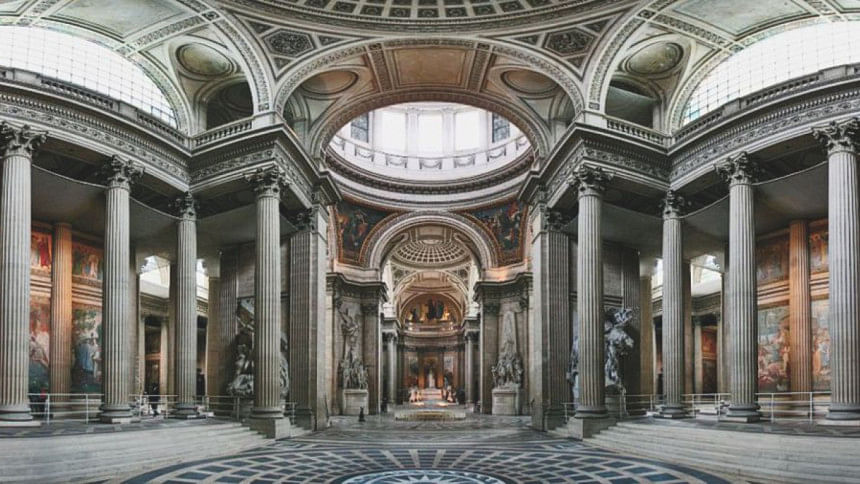Natural History Museum in London

When it comes to gathering knowledge on the thousands of years old earth and its resourceful history of nonliving things, visiting museums could be the best approach. And one of the oldest museums of natural history in the world is the Natural History Museum in London. Originally founded in 1754, it was moved to its present facility in 1881 on an expansive 5.7 hectare piece of land. The present building's intricate architectural design and structure are stunningly eye-catching and picturesque. It is a palatial, Romanesque building that was the parent museum of the British Museum that separated from it in 1963.
Visiting on a holiday, I had to wait in queue for more than half an hour to enter the premises. The queue was so long that it stretched out across the grounds onto the main street.
Visitors to this popular museum mostly included school going children along with their parents. While waiting in queue, I noticed a tree trunk that was 330 million years old. The trunk was planted in the garden area, tagged with a conspicuous notice board saying 'older than the dinosaurs'. Though forbidden to touch, children were seen leaning on it and taking pictures.
As the line inched forward, I entered the museum and encountered a massive dinosaur skeleton cast. The skeleton cast is sometimes dubbed as Dippy and is almost 85 feet long and 22 feet tall.
The landing panel of the main stairs leading to the upper floors has a big, white marble stone statue of naturalist Charles Darwin, commonly known as the father of evolutionary biology.
As a whole, the entire museum contains almost 80 million objects and is divided into four colour zones -- blue, red, green and orange. Each zone has a unique and specific collection of specimens of animals and other natural objects.
In the blue zone, specimens of dinosaurs, fish, reptiles and mammoth mammals are on display. An 82-metre long colossal blue whale skeleton is the main attraction here.
The red zone mostly consists of sculptures of earth and the planets. Visitors are given the feeling of enjoying the galaxy as there is a giant video screen in a pitch-dark gallery.
With specific hiatus, documentaries on the earth's evolution, restless space, earthquakes and volcanoes explosion, and continental-drift are shown.
The green zone tries to discover the symbiotic relationship between life and the environment. There are mostly pictures of animals, specimens of birds, fossil from marine reptiles and minerals on display here.
Meanwhile, the orange zone consists of two sections – the Darwin centre and wildlife garden. The first is an education and research centre for the museum, while the garden is home to thousands of British flora and fauna and more than 2,600 species located outside of the Darwin centre.
Furthermore, there are several galleries in the different zones. But the must-see ones are -- Volcanoes and Earthquakes gallery, Treasures in the Cadogan Gallery, Dinosaurs, Mammals (blue whale) Hintze Hall, formerly known as the Central Hall, Images of Nature, Creepy Crawlies, The Vault and the Earth Hall.
There is a souvenir shop on the ground floor as well, close to the exit gate. Visitors can get miniature dinosaurs; frameless photos of landscape, flowers and animals; jewellery made of natural stone, bone and skull; clothes and crockery printed with natural elements; and famous books written by different naturalists.
Situated on Cromwell Road in Central London, it is easy to access as there are a number of tube-stations nearby. The museum does not have a car parking facility and thus discourages people from using their personal cars when visiting.
Photo: Collected

 For all latest news, follow The Daily Star's Google News channel.
For all latest news, follow The Daily Star's Google News channel. 



Comments